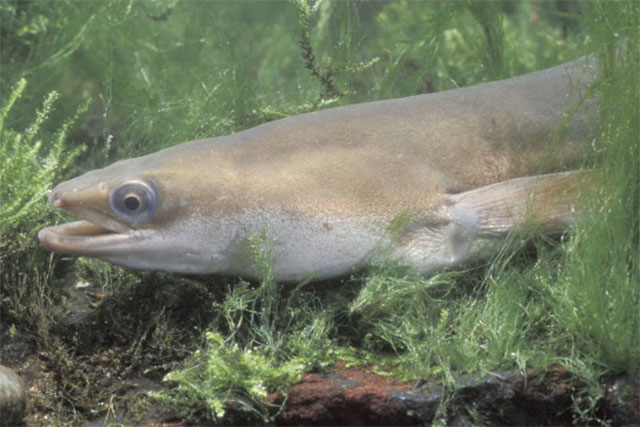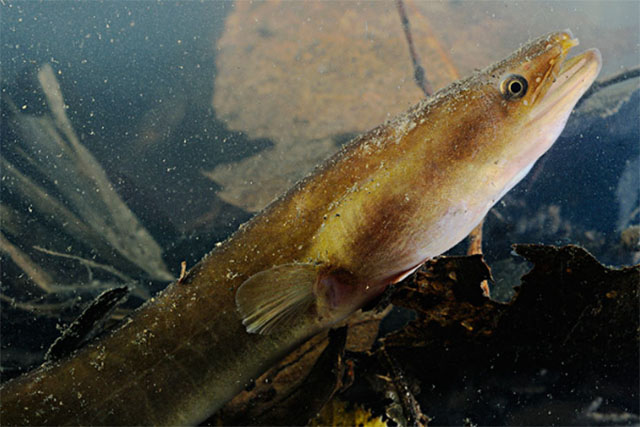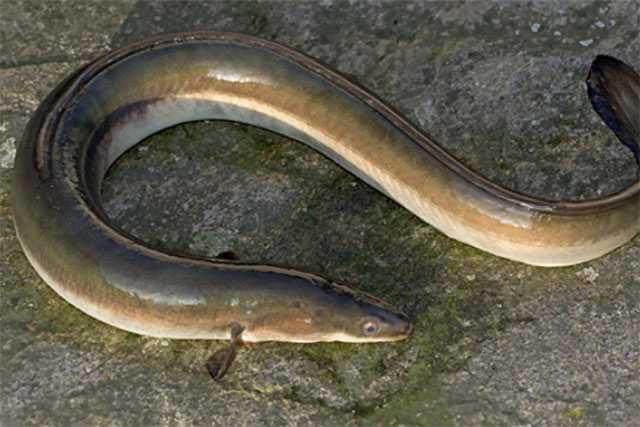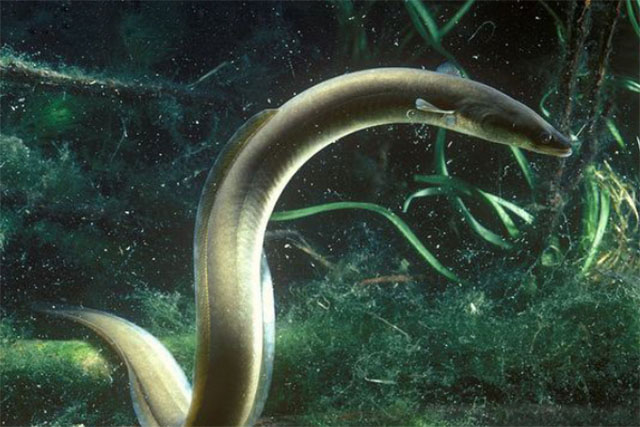European eel is a large eel, up to 1.4 meters in length and widely distributed in the Atlantic ocean, mainly feed on shrimp, crab or shells, etc, belong to a kind of sea migratory fish, mostly appear green, black, brown, etc., whole body skin is very thick, scales all hidden under the skin, the mouth is very sharp slender, long strip body.

European eel most back are present olive green, black and brown, abdomen is suffused with silver, and a small number of adults still keep silver, length can reach 60-80 cm generally, there are a few can grow to about 1 meter, the biggest European eel record of 1.4 meters, slender barrel flat, upper jaw is longer than lower, compared with those of other fish Eels have almost no scales, so their skin is very sticky.

Childhood European eels are mostly back beige and olive, abdomen for yellow silver, and as an adult European eel color deepened, dorsal fin, tail fin and anal fin connected to grow, eventually formed an independent strip fin, make its fins from tail pointed to the back as many as 500 soft fin ray.
The European eel is a carnivorous fish that not only eats crustaceans such as shrimp and sea worms, but also crushes shells and crabs. The European eel is a migratory spawning fish. Although it is a Marine fish, it spends most of its time in fresh water and takes up to three years to migrate to Europe as a juvenile. Its underside becomes very yellow, which scientists think acts as a protective color.

European eels spend most of their juvenile life in rivers, but as adults, they spend most of their lives in the sandy bottom of estuaries, where they burrow to hide. But unlike the European lobster, the European eel lives only in the Atlantic ocean, which includes the Mediterranean, Baltic and Scandinavia.

The European eel is a migratory species, crossing the Atlantic twice in its lifetime. After hatching in the Sargasso Sea (northeast of the West Indies), the eel larvae follow the Gulf Stream for more than 5,000 kilometers until they reach the slopes of continental Europe, where they metamorph into transparent glass eels that continue to migrate ashore across the continental shelf. Upon reaching the coast, glass eels enter estuaries, where some continue to migrate upstream to fresh water until old age (up to 50 years). When they turn into silver eels, they return to the Sargasso Sea to spawn and die. The European eel is commercially important but is now endangered, according to the International Union for Conservation of Nature. The eel population has declined dramatically since 1980.